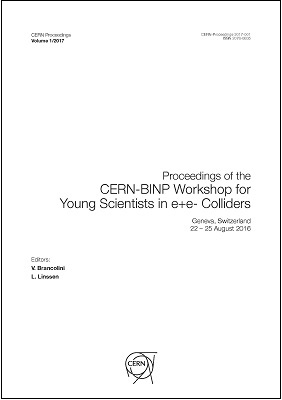Dynamical Aperture Control in Accelerator Lattices With Multipole Potentials
DOI:
https://doi.org/10.23727/CERN-Proceedings-2017-001.195Keywords:
Nonlinear dynamics, dynamic aperture, analytical methods, optimization.Abstract
We develop tools for symbolic representation of a non-linear accelerator model and analytical methods for description of non-linear dynamics. Information relevant to the dynamic aperture (DA) is then obtained from this model and can be used for indirect DA control or as a complement to direct numerical optimization. We apply two analytical methods and use multipole magnets to satisfy derived analytical constraints. The accelerator model is represented as a product of unperturbed and perturbed exponential operators with the exponent of the perturbed operator given as a power series in the perturbation parameter. Normal forms can be applied to this representation and the lattice parameters are used to control the normal form Hamiltonian and normal form transformation. Hamiltonian control is used to compute a control term or controlled operator. Lattice parameters are then fitted to satisfy the imposed control constraints. Theoretical results, as well as illustrative examples, are presented.
Downloads
Published
Issue
Section
License
Authors who publish with this journal agree to the following terms:- Authors retain copyright and grant the journal right of first publication with the work simultaneously licensed under a Creative Commons Attribution License CC-BY-4.0 (link to external page) that allows others to share the work with an acknowledgement of the work's authorship and initial publication in this journal.
- Authors are able to enter into separate, additional contractual arrangements for the non-exclusive distribution of the journal's published version of the work (e.g., post it to an institutional repository or publish it in a book), with an acknowledgement of its initial publication in this journal.
- Authors are permitted and encouraged to post their work online (e.g., in institutional repositories or on their website) prior to and during the submission process, as it can lead to productive exchanges, as well as earlier and greater citation of published work (See The Effect of Open Access).

